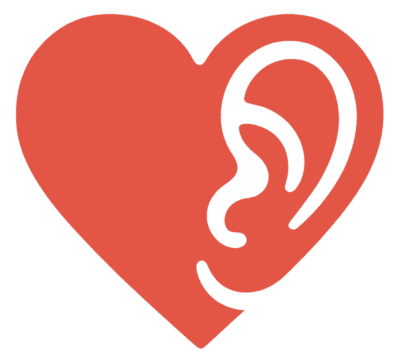Ever walk away from a conversation feeling like you were speaking Klingon while the other person was fluent in… well, definitely not Klingon? That frustrating sense of disconnect, where you know you said something clearly (or so you thought), but it landed completely wrong? Yeah. Been there. Done that. Got the mental t-shirt.
It happens in work meetings, during disagreements with partners, even in casual chats with friends. You feel unheard, misunderstood, or maybe like you inadvertently stepped on someone’s toes without meaning to. For a long time, I’d internalize it – “Did I say that wrong? Was I too blunt? Too soft? Too much?” It’s exhausting, right?
But over time, talking with other women and just paying attention, I started realizing it wasn’t always me, or them necessarily being difficult. Sometimes, it’s just a classic case of communication style clash. We’re all wired a bit differently, socialized differently, and have different default settings for how we express ourselves and interpret others. Recognizing the signs and figuring out ways to navigate these clashes – especially the ways I’ve seen women effectively bridge these gaps – felt like finding a slightly better map for navigating these tricky interactions. I’m definitely not a communication guru, just sharing what I’ve picked up along the way.
Spotting the Signs: Is it Just Me, or…? (4 Signs)
How do you know if it’s a genuine disagreement versus a style clash muddying the waters? It’s not always obvious, but here are a few things that often signal a mismatch in how you communicate:
- The “Lost in Translation” Feeling: This is the big one. You explain something, maybe even repeat it, but the other person’s response shows they completely missed your point or took it in a way you never intended. Or vice-versa – they say something, and you’re left scratching your head, thinking, “Where did that come from?” It feels like your wires are crossed, constantly leading to clarifications that somehow still don’t quite land. Oh man, I still cringe thinking about this one time I tried giving someone feedback. I thought I was being so careful, softening every word, trying not to hurt their feelings… and they reacted like I’d just accused them of treason! It was completely baffling – what I thought was gentle guidance, they heard as a full-blown critique. Talk about your signals getting crossed.
- Getting Talked Over (Constantly): Or how about this: you finally get a chance to speak, you’re maybe halfway through your point, and BAM, someone just barrels right over you? Or the conversation is moving at lightning speed, like a verbal ping-pong match, and you just can’t find a way in? You end up just… staying quiet, because by the time you get your thoughts together, they’re three topics ahead. That feeling of constantly being cut off or having to shout to be heard? Often that’s not someone being deliberately rude (though sometimes it is!), it’s just a mismatch – maybe they think fast-paced is energetic, while you need a moment to breathe and think. But wow, it sure feels like you’re being dismissed, doesn’t it?
- Heart vs. Head Conflicts: And then there’s the classic – you bring up something that’s genuinely bothering you, maybe your voice even trembles a little because it matters, and you get hit with a ‘Calm down’ or ‘Don’t get so emotional.’ Like your feelings somehow invalidate your point? Ugh. Or the opposite – you’re trying to discuss something sensitive, and the other person is all facts and figures, like a robot, and you’re sitting there thinking, ‘Hello? Human element? Anyone home?’ That disconnect, where one person is leading with heart and the other with pure head, happens all the time and can make both sides feel completely misunderstood and judged.
- The Feedback Fail: Giving and receiving feedback is already tricky, but style clashes can make it a minefield. Maybe you prefer feedback delivered directly, but you get vague hints instead. Or perhaps you try to offer constructive criticism gently, only for it to be perceived as weak or unclear by someone who prefers bluntness. I once worked with someone who thought my detailed, explanatory feedback style was “beating around the bush,” while I found his one-sentence critiques unhelpful and harsh. Total feedback fail due to style differences.
Why Does This Happen? (Hint: It’s Often Not Personal)
Okay, so you see the signs. But why? While individual personalities play a huge role, a lot of it boils down to different communication ‘programming.’ Think about upbringing, cultural norms, even gender socialization – these things shape how we learn to talk, listen, and interpret cues.
One really common area I’ve noticed clashes is around direct vs indirect communication. Some people are raised or work in environments where you say exactly what you mean, no fluff. “Get me that report by 3 PM.” Others learn to communicate more indirectly, using softer language, hints, or focusing on relationship harmony. “Would it be possible to maybe get that report sometime this afternoon if you have a chance?” Neither is inherently ‘better,’ but when these styles collide? The direct person might see the indirect person as wishy-washy or unclear, while the indirect person might perceive the direct person as rude or demanding. Sound familiar?
It’s rarely about one person being intentionally obtuse or difficult. It’s often just… different defaults. Different assumptions about what’s polite, what’s clear, and what’s expected in a conversation. Realizing this helped me take things less personally. A little.

Bridging the Gap: What I’ve Seen Work (or Tried Myself)
So, the million-dollar question: what can you do? Especially as women, who, let’s be honest, often end up doing the heavy lifting in smoothing over communication bumps. Again, no magic wands here, but here are a few strategies I’ve seen work wonders, or at least help manage the situation:
- The Power of the Pause & Clarify: This feels simple, but it’s surprisingly effective. When things feel off, instead of reacting immediately, take a breath. Then, try clarifying your understanding. “Okay, just so I’m clear, are you saying X?” or “When you say Y, what I’m hearing is Z. Is that right?” It does two things: slows down the conversation and gives both people a chance to sync up before misunderstandings snowball. It takes practice not to jump in defensively, but that pause is golden.
- Choosing Your Battles & Your Style (Flexing vs. Holding Firm): Sometimes, you might slightly adjust your style to meet the other person. If you know someone prefers directness, you might try being a bit more concise (even if it feels unnatural). This isn’t about being fake; it’s strategic adaptation. However, sometimes, sticking to your natural style is important, especially if adapting feels like silencing yourself. It’s a judgment call. I’ve found myself consciously shifting between being more direct in certain work contexts and sticking to my more collaborative style when authenticity feels more crucial than just getting the message across efficiently. It’s like code-switching, but for communication styles. And yes, it can be tiring.
- The “Meta-Conversation” (Talking About the Talk): This one feels a bit advanced, but it can be incredibly powerful in ongoing relationships (work or personal). It involves stepping back and talking about the communication pattern itself. “Hey, I’ve noticed that sometimes when we discuss [topic], I feel [emotion] because it seems like [observation]. Is that something you notice too?” Or, “I work best with [preferred style]. Could we try [suggestion]?” This requires trust and isn’t right for every situation, but naming the dynamic can help de-personalize it and find solutions together. I tried this with a colleague once, talking about our direct vs indirect communication differences, and it genuinely helped clear the air. Awkward at first? Yes. Worth it? Also yes.
- Setting Gentle Boundaries: Sometimes bridging the gap means protecting your own communication space. This might look like saying, “Could you let me finish my thought?” if you’re being interrupted. Or, “I need a moment to process that before I respond” if things feel too intense. It’s about asserting your needs within the conversation respectfully but firmly. It’s not about building walls, but about ensuring the exchange feels safe and productive for you, too.
It’s Not About Fixing Them (or You)
Here’s the thing, though: most of the time, one style isn’t actually ‘better’ or ‘worse’ than another, it’s just… different. Like being right-handed vs. left-handed. Trying to force everyone to communicate just like you is usually a recipe for frustration. It’s more about figuring out how to work with the differences.
And let’s just put this out there: we women often find ourselves doing the lion’s share of that ‘figuring out.’ It’s like we’re expected to be the emotional translators, the ones who smooth over the awkward bits, the keepers of conversational peace. Learning these bridging strategies is great, it gives us tools. But it’s also perfectly okay to notice when you’re carrying the whole communication load and decide, ‘You know what? I only have so much energy for this today.’ Sometimes, preserving your own sanity is the most important communication act of all.
Ultimately, understanding communication styles is about understanding people – including yourself – a little better. It’s about recognizing patterns, taking things less personally (when possible!), and having a few more options in your back pocket for when those inevitable clashes occur.
So, the next time you hit that “lost in translation” wall, take a breath. Maybe it’s not you, maybe it’s not them. Maybe it’s just a style clash. Recognizing that is half the battle. And having a few ways to approach it? That makes navigating the tricky world of human interaction just a little bit easier. Hopefully.
Frequently Asked Questions
What should I remember about communication style differences in interactions?
Remember that no style is inherently better or worse; they are just different. Recognizing and respecting these differences helps navigate interactions more smoothly and reduces frustration.
Is it effective to try and change someone’s natural communication style?
Generally, it’s more productive to work with the differences rather than try to change someone’s natural style. The goal is to understand and adapt to styles to facilitate better interactions, not to force conformity.
How can I improve communication when I encounter style mismatches?
You can improve communication by pausing to clarify understanding, choosing when to adapt your style or hold firm, discussing the communication pattern itself with the other person, and setting gentle boundaries to protect your space.
Why do communication style clashes happen often between women?
These clashes often occur due to differences in upbringing, cultural norms, gender socialization, and individual defaults in expressing and interpreting information, which shape how communication styles develop and can sometimes conflict.
What are common signs that I am experiencing a communication style clash?
Common signs of a communication style clash include feeling lost in translation, being talked over, conflicts between heart and head, and feedback mishaps where messages are misunderstood or perceived differently.




